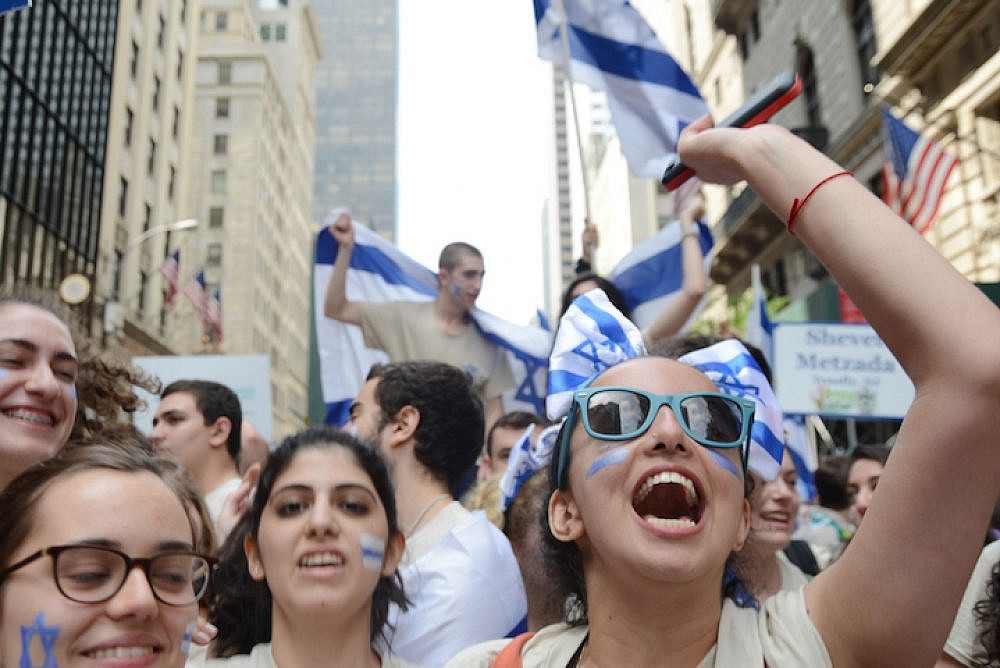Mizrahi Jews have received growing global attention over the last few years. More and more people are finally recognizing that not all Jews in Israel are of European descent, that many arrived from Middle Eastern and Muslim countries where they were religious minorities, and that successive generations have faced discrimination since arriving in the country.
There is no overstating the importance of this increased recognition, the result of decades of dedicated work by Mizrahi activists and scholars. Discrimination against Mizrahim in Israel is an often denied and understudied phenomenon, and raising awareness of their unique experiences and circumstances is a crucial step in fighting against Mizrahi marginalization.
As international attention has increased, however, it has also brought with it a new wave of Mizrahi voices who insist on utilizing their identity for the purposes of hasbara, or PR for the Israeli government. According to these views, recognizing Mizrahi history inevitably leads one to understand that Palestinians err in casting Israelis as privileged oppressors. This argument is misguided and misleading.
If the past decade saw the rise of pinkwashing (the emphasis on limited LGBTQ rights in Israel to depict the country as a modern, enlightened democracy), these new Mizrahi voices provide a window onto an emerging trend of Mizrahi-washing: using the Mizrahi narrative to try and better Israel’s image around the world under the guise of “authenticity.” In so doing, these activists are attempting to distance the country’s image from that of the white European colonizer, while situating Mizrahi Jews as the ultimate racialized victim in the region and utilizing their past and present marginalization as the decisive argument against Palestinian demands.
Mizrahi Jews, Palestinians, and Black Americans
The trend of Mizrahi-washing has accelerated over the last few years, most notably as Mizrahi hasbara activists have tried to combat cross-movement solidarity between Palestinians and Black Americans. Over the last half decade, the Black Lives Matter movement has expressed its solidarity with the Palestinian struggle for freedom and justice, while Palestinians have similarly expressed their commitment to the struggle for racial justice in the United States.
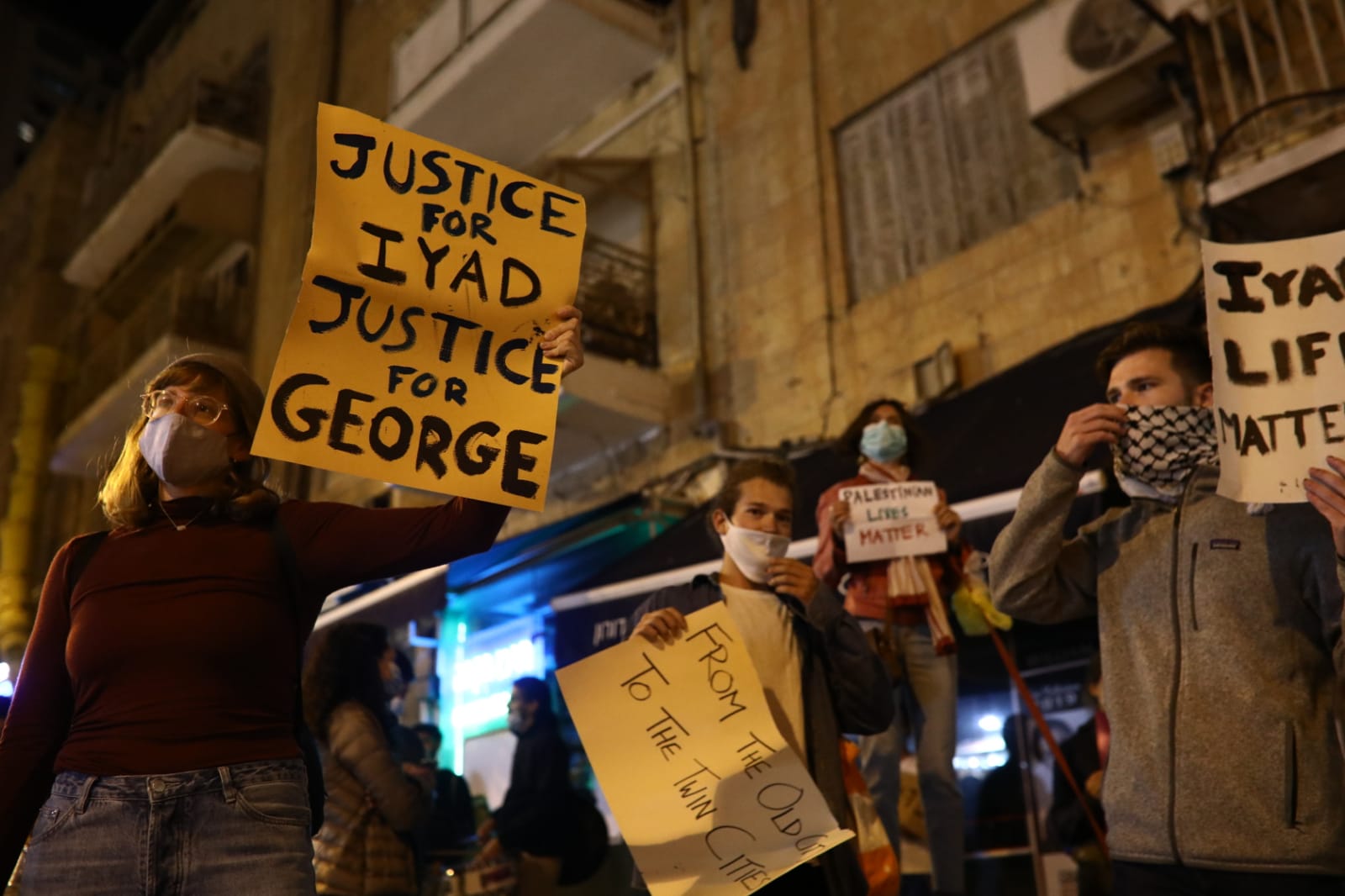
Support and similarities between the two groups were galvanized by the recent shooting and killing of Iyad al-Hallaq, a 32-year-old Palestinian man with autism, by Israeli Border Police less than a week after the police killing of George Floyd in Minneapolis. In demonstrations protesting the killing of al-Hallaq, activists held signs referencing Floyd and the BLM movement.
In light of this display, Nave Dromi, the Israeli director of the Middle East Forum and Israel Victory Project — a conservative initiative dedicated to “backing an Israel Victory over the Palestinians” as the way to resolve the “Arab-Israel conflict” — used a recent op-ed to argue against drawing any possible parallels between the experiences of Black Americans and those of Palestinians. Any attempt to discuss the Israeli occupation and oppression of Palestinians through a racial lens, Dromi writes, misses one crucial aspect: the existence of Mizrahi Jews. Acknowledging that not all Jews are white Europeans, she argues, should undermine any effort to “hijack” the U.S. conversation about race and apply it to the Israeli context.
Dromi is not alone. Hen Mazzig, another prominent hasbara activist, who was paid by pro-Israeli groups to tour campuses around the U.S., argued last year that recognizing the existence of Mizrahim in Israel derails attempts to “frame the Israeli-Palestinian conflict in terms of race.” Those who seek to do so, Mazzig argues, tend to “define Israelis as Ashkenazi Jews alone,” despite the fact that the majority of the country is comprised of Mizrahi Jews, of whom many were persecuted, attacked, and marginalized in the “Muslim world” prior to their arrival to Israel.
Both Dromi and Mazzig are correct in stating that Mizrahi Jews have historically suffered violence and displacement as religious minorities in their countries of origin. However, this somehow leads Mazzig to deny the power Israel possesses with regard to Palestinians, and Dromi to make the baseless claim that Mizrahim “sometimes see an Arab Muslim privilege in a somewhat similar way that a person of color might see a white person in the U.S.”
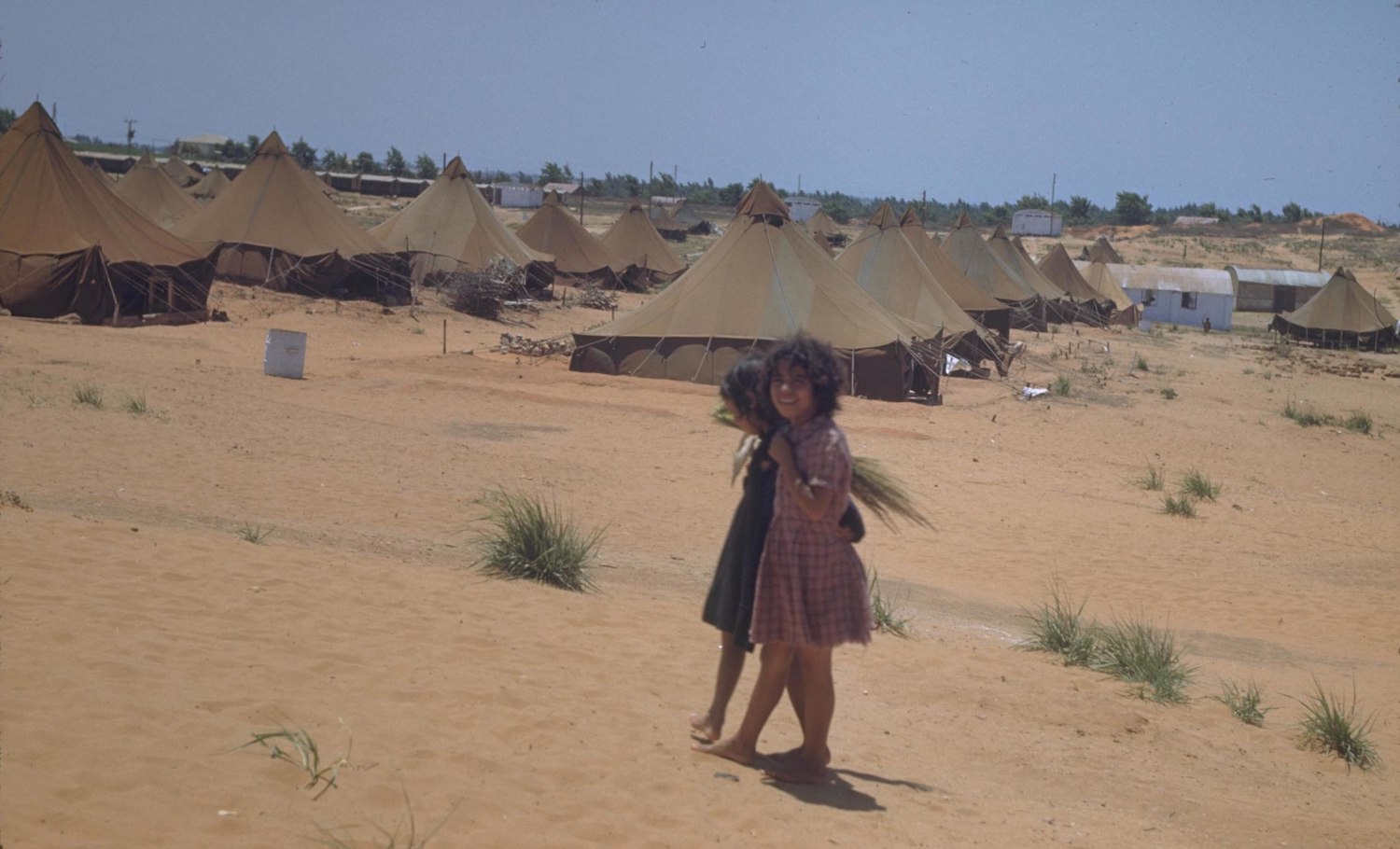
It is no wonder that both writers fixate on the past. Had the two of them chosen to honestly grapple with the present state of Mizrahi Jews, they might have been shocked to discover that most of them no longer live as minorities in “the Muslim world” but rather in Israel — a Jewish country that actively discriminates against other minority groups. Furthermore, they would have seen that despite ongoing discrimination against Mizrahi Jews in Israel today, they are nonetheless significantly better off under Israeli rule than are Palestinians.
Arguments that utilize events such as the Farhud — the 1941 massacre against Jews in Iraq — to diminish the Palestinian claim for justice weaponize Mizrahi Jewish history against the Palestinian struggle. Such arguments are based on the extremely problematic conflation of hundreds of millions of people living in countries as diverse as Iraq, Iran, and Morocco under the umbrella term of “the Muslim world.” Only through a paradigm that views all Middle Eastern and North African populations as identical can one offset the oppression of Palestinians by citing the harm committed against Jews in Iraq hundreds of miles away and decades earlier. And, only by assuming that Palestinians in 2020 are completely interchangeable with anti-Jewish Iraqi mobs from over 70 years ago can one seriously claim that Mizrahi Jews see Palestinians today as privileged or somehow equivalent to white Americans.
‘A rampart of Europe against Asia’
One could easily mistake Dromi and Mazzig’s attempts to introduce Mizrahi experiences and history into the larger global conversation as genuine advocacy on behalf of Mizrahim. But the narrative they promote actually works directly against Mizrahi interests, because race is not only relevant to the Palestinian context — it is also a useful lens through which we can understand the story of Mizrahi Jews in Israel, as well as that of Ethiopian Jews, African asylum seekers, and numerous other disadvantaged communities.
While Mazzig states that Israel “isn’t a country of privileged and powerful white Europeans,” the state was indeed founded on white European ideals with the declared hope of bringing Europe to the Middle East.[1] Understanding the role that race has historically played in the Zionist movement allows us to recognize the efforts made by Israel’s founders to convince the world that Israel is indeed a country of white Europeans. According to their own narrative, Israel was to “form a portion of a rampart of Europe against Asia, an outpost of civilization as opposed to barbarism,” in the words of Theodor Herzl, considered the father of the modern Zionist movement.
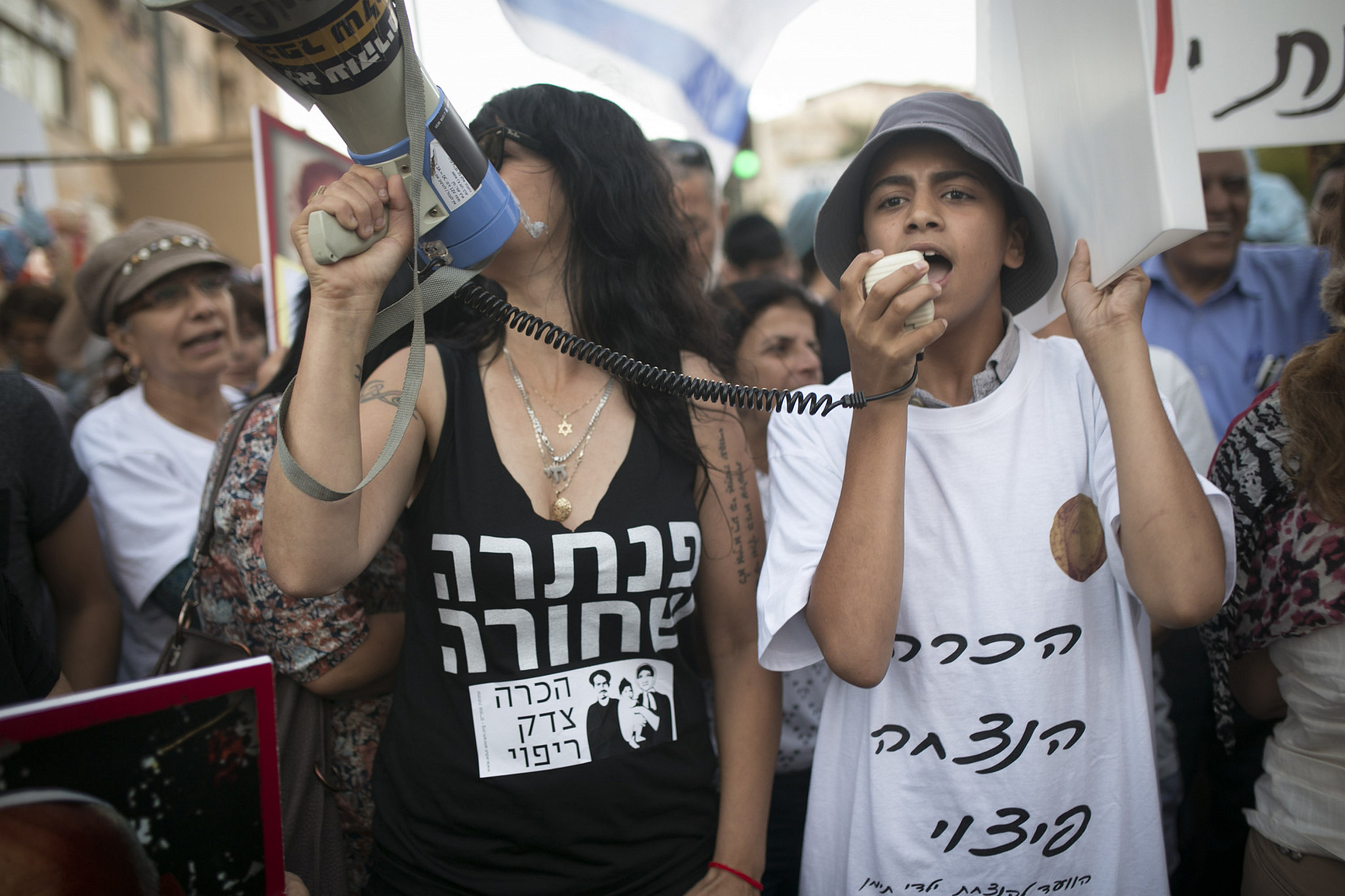
This narrative, which casts non-Europeans as barbaric, has since powered much of the treatment that non-Europeans — both Palestinians and Mizrahi Jews — have suffered under the Israeli state. Informed by this mindset, Israeli leaders sent many Mizrahi Jews to live in squalid transit camps upon arriving in Israel, sometimes for years on end, in the belief that they did not need or deserve better.[2] Mothers were deemed unqualified to raise their own children,[3] and many children were subsequently transferred to boarding schools or foster care.[4] In some cases, Mizrahi babies, particularly children of new immigrants from Yemen, were forcibly taken from their families and never heard from again.
Mizrahi attempts to resist their treatment were violently put down by police, and led to their being labeled as pathologically aggressive and violent.[5] Even today, data reveals persistent educational, income, and employment gaps.[6] In order to tell the story of Mizrahi marginalization, one need not go back to 1940s Iraq. This remains the story of many Mizrahi Jews in Israel today.
Adopting a racial lens to study police violence can help us recognize the racist dynamics that allowed two Israeli police officers to kill Iyad al-Hallaq, including the complete disregard for Palestinian life, the immediate presumption of guilt and the sense of threat associated with the Palestinian body, and the assumption that the officers would likely get away with the killing.
This same lens can also help us understand the killings of Shahar Maman and Shirel Habura, two Mizrahi men who were shot dead by Israeli police in incidents that need not have ended their lives. It may also help explain the killing of Solomon Teka, an unarmed Ethiopian Israeli teenager who was shot by an off-duty police officer last year, sparking mass protests across the country by the Ethiopian Israeli community.
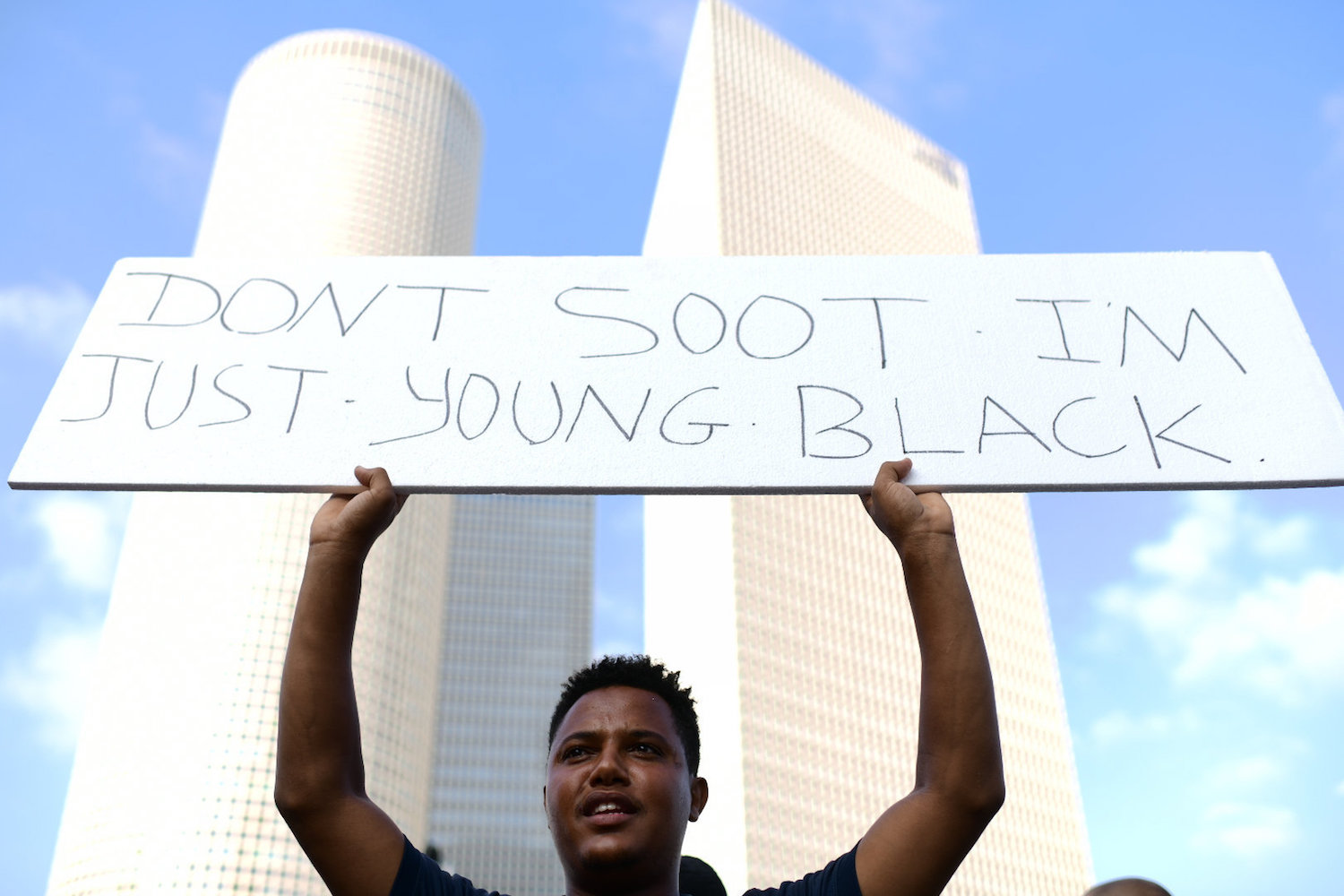
An examination conducted last year revealed that between 2014-2019 almost all Israeli citizens killed by police were people of color. Out of 14 killed, nine were Palestinian, three were identified as Mizrahi, one was of Russian origin, and one was Ethiopian.
All of these incidents and data not only demonstrate the dispensability of non-white bodies and the violence embedded in regimes that are built around whiteness, they also allow us to draw important parallels between the violence against Black Americans and the kind deployed against people of color in Israel-Palestine.
Perhaps that is exactly what is so terrifying about these parallels: recognizing the role race plays in Israel-Palestine could begin to knock down the walls of separation that have been built between Mizrahi Jews and Palestinians — walls that make it easier to control both.
Voices that seek to Mizrahi-wash Israel’s accountability for its actions and rewrite reality by casting Palestinians into the role of white supremacists are using the very idea of race to sabotage any possibility for racial justice. Doing so is an appropriation of Black and Mizrahi voices for the continued subjugation of Palestinians. It should be recognized as the propaganda it is.
____________________________________________________________________________
[1] Dafna Hirsch, “We Are Here to Bring the West”: Hygiene Education and Culture Building in the Jewish Society of Mandate Palestine (2014) (Hebrew).
[2] Discussing the need to provide better housing for Polish immigrants, Yehuda Braginsky of the Absorption Department is quoted saying: “[w]e’ll take those houses which we have already allocated to the North Africans and the Yemenites and give them to the Poles…” In that same discussion, Zionist leader Itzhak Greenbaum also stated that “. . . Instead of putting the Polish Jews in this situation [of harsh living conditions], it would be best to do it with the Jews of Turkey and Libya. That won’t be hard for them.” Tom Segev, 1949: The First Israelis 178 (Arlen N. Weinstein tran., 1998).
[3] Dafna Hirsch, see footnote 1; Benny Nurieli, The Children Must Be Saved: OSE and the Jews of North Africa, in Zionism and Empire 269 (Yehouda Shenhav ed., 2015) (Hebrew).
[4] Tammy Razi, Forsaken Children: The Backyard of Mandate Tel-Aviv (2009). Bias in decisions regarding the removal of children by the child welfare system was also found in recent years, see Guy Enosh & Taki Bayer-Topilsky, Reasoning and Bias: Heuristics in Safety Assessments and Placement Decisions for Children at Risk, 45 British Journal of Social Work 771 (2015).
[5] Sami Shalom Chetrit, The Mizrahi Struggle in Israel: Between Oppression and Liberation, Identification and Alternative, 1948–2003 48 (2004) (Hebrew).
[6] Yinon Cohen, Noah Lewin-Epstein & Amit Lazarus, Mizrahi-Ashkenazi Educational Gaps in the Third Generation, 59 Research in Social Stratification and Mobility (Feb. 2019); Tamar Kricheli-Katz, Issi Rosen-Avi & Neta Ziv, Hierarchy and Stratification in the Israeli Legal Profession, 52(2) Law & Society Rev. (2018)

